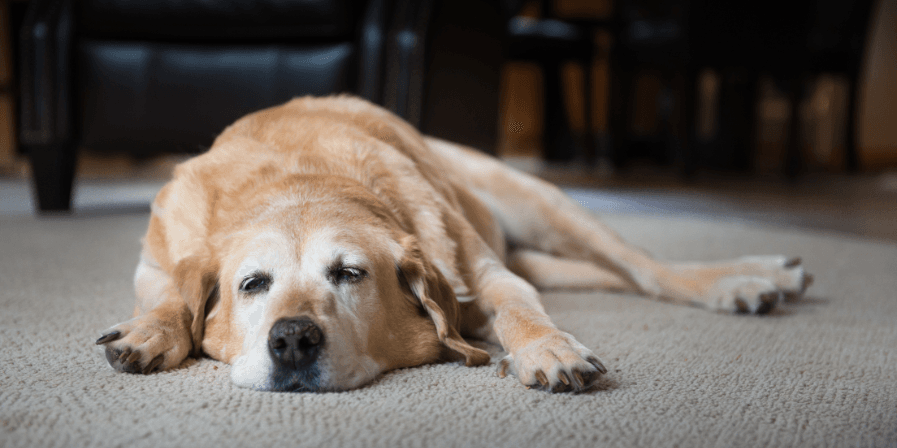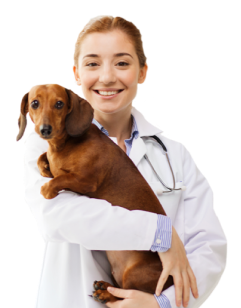Loose Motion in Dogs: Top Signs It's Time to Visit the Vet

Every dog parent has faced the messy ordeal of loose motion or diarrhea in their furry companion. It’s a common problem that can stem from a variety of causes, ranging from something they ate to underlying health issues. While occasional loose motion is usually not a concern, persistent or severe diarrhea could indicate something more serious. Recognizing the signs of when to seek veterinary help can make all the difference for your dog's health and recovery.
In this blog, we'll dive into the causes, signs, and when it's time to visit the vet if your dog experiences loose motion.
Causes of Loose Motion in Dogs
There are several potential reasons why your dog may develop loose motion. Some of the most common include:
1. Dietary Indiscretion
Dogs are curious creatures and often get into things they shouldn’t. Eating spoiled food, garbage, or non-food items can irritate their digestive system, resulting in loose stools.
2. Dietary Changes
If you've recently switched your dog’s food or introduced new treats or table scraps, their digestive system might react with diarrhea. Dogs need gradual changes to their diet to avoid stomach upsets.
3. Food Intolerance or Allergies
Just like humans, dogs can have food intolerances or allergies. Certain ingredients in their diet, like dairy, wheat, or certain proteins, may trigger loose stools or other gastrointestinal issues.
4. Parasites
Parasites such as roundworms, hookworms, giardia, and coccidia can invade your dog's intestines, leading to diarrhea and other health issues. Puppies, in particular, are susceptible to parasitic infections.
5. Infections and Diseases
Bacterial infections like salmonella or viral infections such as parvovirus can cause severe diarrhea. Additionally, underlying health issues like inflammatory bowel disease, liver disease, or pancreatitis may present with diarrhea as a primary symptom.
6. Stress or Anxiety
Stressful situations such as moving to a new environment, a change in routine, or separation anxiety can upset your dog’s gastrointestinal system, leading to loose stools.
7. Medications
Certain medications, like antibiotics or painkillers, may have diarrhea as a side effect. Always monitor your dog when they are on new medication and consult your vet if you notice any changes.
Top Signs It's Time to Visit the Vet
While loose motion can be a simple case of an upset stomach, certain signs indicate it’s time to seek veterinary assistance. If you notice any of the following symptoms in your dog, a trip to the vet is necessary.
1. Persistent Diarrhea Lasting More Than 24 Hours
If your dog has loose stools that last for more than 24 hours, it’s time to visit the vet. Prolonged diarrhea can lead to dehydration and signal a more serious underlying health issue that needs to be addressed immediately.
2. Blood in the Stool
Blood in your dog’s stool—whether bright red or dark and tarry—indicates that something is wrong. Blood can be a sign of intestinal bleeding, parasites, or a serious infection. Regardless of the cause, blood in the stool always warrants a vet visit.
3. Lethargy and Weakness
If your dog is experiencing diarrhea along with lethargy, fatigue, or weakness, it’s important to seek veterinary care. Lethargy is a sign that your dog’s body is fighting something serious, and they may need supportive treatment or medication to recover.
4. Vomiting Alongside Diarrhea
When diarrhea is accompanied by vomiting, it can quickly lead to dehydration. If your dog is unable to keep food or water down, they may require intravenous fluids to restore their hydration and electrolytes. Vomiting with diarrhea may also point to a more severe gastrointestinal problem that needs medical attention.
5. Loss of Appetite or Refusal to Drink Water
A dog that refuses to eat or drink water in conjunction with diarrhea can be at risk of dehydration, a condition that can become dangerous quickly. If your dog isn’t interested in food or water for more than half a day, it’s crucial to get them to a vet for assessment and hydration support.
6. Fever
A fever often accompanies infection or inflammation. If your dog has diarrhea and you suspect they have a fever (warm nose, lethargy, shivering), it’s a strong sign of an underlying issue that needs medical intervention. The vet will be able to measure your dog's temperature and provide appropriate care.
7. Abdominal Pain or Bloating
If your dog shows signs of abdominal pain (like whining, panting, restlessness, or a swollen abdomen), they may be experiencing something more severe, such as a blockage or pancreatitis. Abdominal pain alongside diarrhea is a reason to visit the vet immediately.
8. Foul-Smelling or Unusual Stool
While diarrhea is never pleasant, an unusually foul-smelling or discolored stool can indicate infections, parasites, or other digestive problems. If your dog's loose motion has an extremely foul odor or appears greasy, yellowish, or frothy, consult your vet for proper diagnosis and treatment.
Managing Loose Motion at Home
If your dog’s diarrhea is mild and they’re otherwise acting normally, there are a few home care tips you can try:
1. Bland Diet: Introduce a bland diet of boiled chicken (no seasoning) and plain white rice for a couple of days. This can help soothe the stomach and firm up loose stools.
2. Probiotics: Probiotics or plain yogurt with active cultures may help rebalance your dog's gut flora and alleviate diarrhea. Consult with your vet for the right type and dosage.
3. Hydration: Make sure your dog has access to fresh, clean water at all times. You can also offer electrolyte solutions for dogs to prevent dehydration.
4. Observe Closely: Monitor your dog closely for any changes in behavior, worsening symptoms, or improvement. If you don’t see an improvement within 24 hours, it’s time to see the vet.
Prevention Tips
Preventing loose motion often involves maintaining a healthy diet and routine for your dog. Here are some ways to prevent diarrhea from occurring:
• Stick to a Consistent Diet: Avoid sudden changes in your dog's diet and introduce any new foods gradually over a week.
• Keep Your Dog Away from Unsafe Foods: Ensure they don’t eat garbage, spoiled food, or toxic substances. Keep an eye on what they chew or swallow.
• Regular Vet Visits: Schedule regular wellness exams with your vet, keep up with vaccinations, and maintain a deworming schedule to prevent parasites.
• Reduce Stress: Minimize changes in their environment, provide regular exercise, and establish a consistent routine to reduce stress-related diarrhea.
When in Doubt, Consult Your Vet
Diarrhea in dogs can be caused by a variety of factors, ranging from mild dietary issues to serious health concerns. It’s always better to err on the side of caution and consult your vet if you notice any worrisome symptoms or if the diarrhea persists. Proper diagnosis and treatment can ensure that your furry friend gets back to their happy, healthy self as quickly as possible.
If you're ever in doubt about your dog's symptoms or need professional advice, don't hesitate to reach out to your veterinarian for assistance. For expert veterinary care, reach out to DCC Animal Hospital to help your dog get the best treatment and care they need.
FAQs
1. What should I do if my dog has loose motion?
If your dog is experiencing loose motion, start by withholding food for 12-24 hours to allow their digestive system to settle (but keep them hydrated). Introduce a bland diet of boiled chicken and rice once the diarrhea has reduced. Monitor their symptoms, and if diarrhea persists for more than 24 hours, is accompanied by blood, vomiting, lethargy, or dehydration, contact your vet immediately.
2. Can stress cause loose motion in dogs?
Yes, stress and anxiety can be a common cause of loose motion in dogs. Situations like moving to a new environment, changes in routine, loud noises, or separation anxiety can upset their digestive system. If you suspect stress is the cause, try to identify and reduce the stressors, and ensure your dog feels safe and calm.


 How can we help?
How can we help?